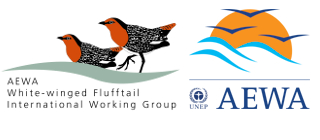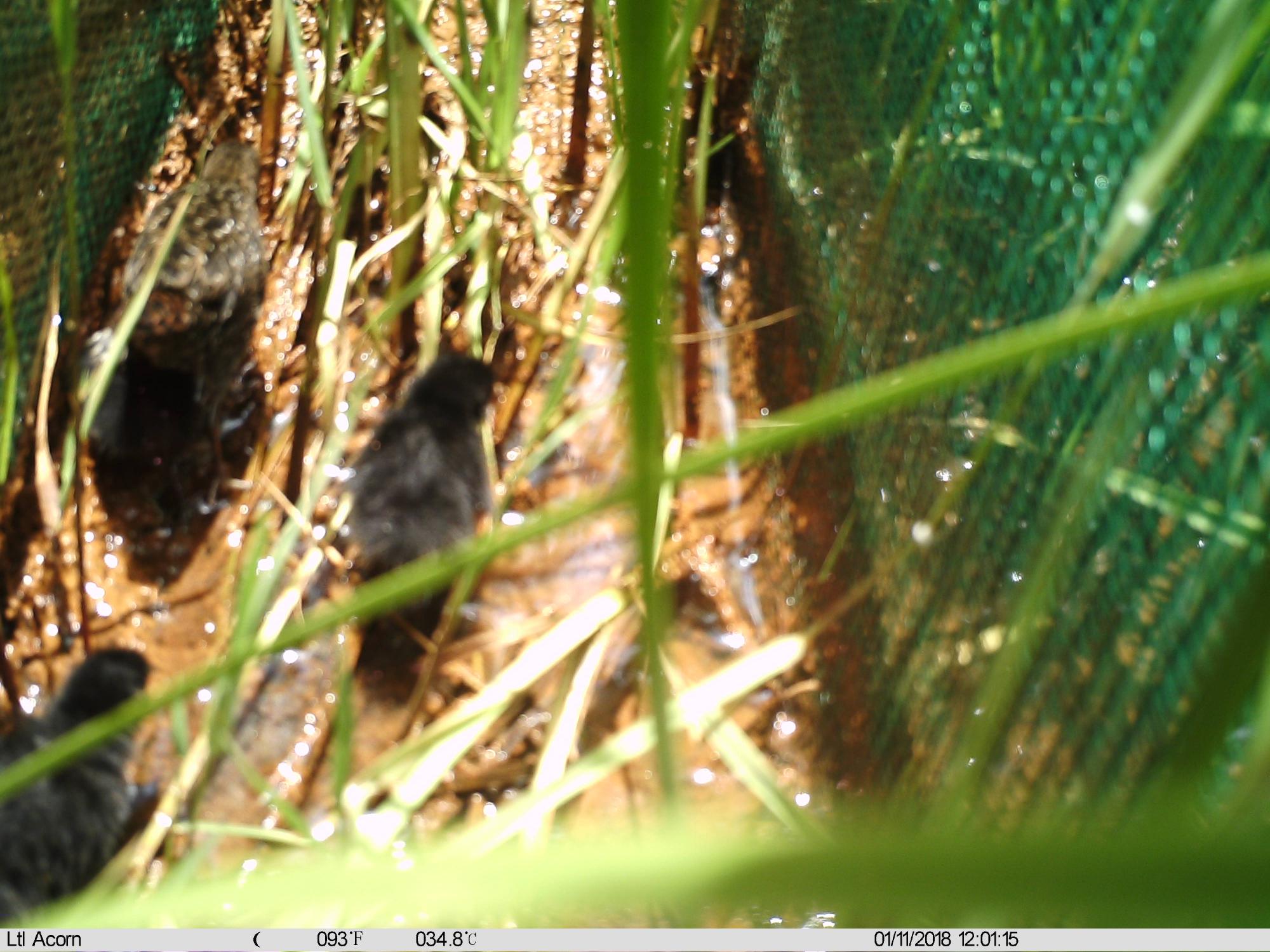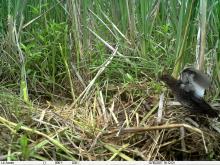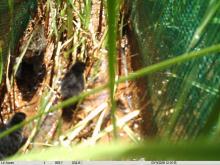Current Size: 76%
First breeding record in South Africa for Critically Endangered African Flufftail
The White-winged Flufftail is one of the world's most threatened and rarest birds. Destruction and degradation of the species high altitude wet grassland habitat have resulted in a situation where its survival in the wild is uncertain. There is a race against time to ensure that it does not become the first African bird to go extinct, following the same fate as North Americaís Passenger Pigeon and Mauritiusí Dodo. Through the use of a novel survey method, BirdLife South Africaís research team has recently revealed the first breeding records for South Africa, contradicting prior thought that the White-winged Flufftail is a non-breeding visitor to South African wetlands.
White-winged Flufftail is only known to occur with any regularity in Ethiopia and South Africa, more than 4000 km apart. The species is found in South Africa from November to March and it inhabits high altitude wetlands in the eastern parts of South Africa. The species breeds in the northern hemisphere during July to August. Prior to the recent discovery, the only known breeding site was Berga Wetland in Ethiopia.
The implementation of a conservation plan (White-winged Flufftail Action Plan) through the collaborative efforts of BirdLife South Africa, Middelpunt Wetland Trust and the Ethiopian Wildlife and Natural History Society (The BirdLife Partner in Ethiopia) is being undertaken under the auspices of the White-winged Flufftail International Working Group, African Eurasian Waterbird Agreement (AEWA). However, successful conservation intervention for this species is highly dependent on a better understanding of the birdsí biology and movements.
Over the past two years BirdLife South Africaís Robin Colyn and ecologist Alastair Campbell have developed an innovative method to survey this cryptic and elusive species. Dubbed the BirdLife South Africa Rallid Survey Method (Colyn et al. 2017, Ostrich 88: 235-245), it uses a cleverly designed camera trap system to record the secret life of the White-winged Flufftail. Working at Middelpunt Wetland near Belfast, in 2016/17 they recorded interesting wing-flapping behaviour during which both males and females display their white wing feathers. In 2017/18, the survey technique was further refined. The most exciting discovery was photographing recently hatched chicks and juvenile White-winged Flufftails. At least two breeding attempts were recorded, with chicks ranging from only a couple of days old to juvenile birds which were about four weeks old. This confirms that the White-winged Flufftail is not a ìnon-breeding visitorî to South Africa, says Robin Colyn, one of BirdLife South Africaís ornithologists and lead on the development of the novel survey method.
Camera trap footage of three chicks and a female White-winged Flufftail moving through the Middelpunt Wetland ñ the first ever evidence that this species breeds outside of Berga Wetland, Ethiopia. Photo: BirdLife South Africa ñ Robin Colyn)
A scientific study, published a week ago, authored by BirdLife South Africa and National Zoological Gardens geneticists has showed that South African and Ethiopian birds are genetically similar, with only three minor sequence variations between the two populations (Dalton et al. 2018, African Journal of Ecology 56: 28-37).
We are still unsure what our findings mean for White-winged Flufftail conservation. Our survey method did however confirm a low abundance and therefore, until further knowledge, our assumption holds that this species is extremely rare and it remains on the brink of extinction, says Dr Hanneline Smit-Robinson, BirdLife South Africaís Terrestrial Bird Conservation Programme Manager. She adds that BirdLife South Africa would like to expand its use of the newly developed Rallid Survey Method to at least another three wetlands in South Africa to confirm the presence of, and hopefully breeding by, White-winged Flufftails at these sites. A donation of R4000 for each camera would help us to reach our target of buying another 60 camera traps for use in the 2018/19 breeding seasons. A further call by BirdLife South Africa is to raise funds to support the conservation initiatives that would ultimately protect the important habitats used by this wetland specialist. Please visit the BirdLife South Africa website (www.birdlifesa.org.za) or email conservation@birdlife.org.za for further information. Anyone wishing to donate towards this important conservation work can either deposit funds directly to BirdLife South Africa (FNB, Acc No: 62067506281, Branch: 250655) using the reference WWF_YourInitials&Surname, or can use the online payment platform accessed via www.birdlife.org.za/support-us/donate where the White-winged Flufftail tab can be selected as the chosen cause.
For more information contact:
Dr Hanneline Smit-Robinson
Head of Conservation, BirdLife South Africa
email: hanneline.smit-robinson@birdlife.org.za
phone: 011 789 1122/082 4534714
or
Robin Colyn
KEM-JV Fellow of Conservation, BirdLife South Africa
Email: robin.colyn@birdlife.org.za
Phone: 076 833 8454
Full references:
- Colyn R, Campbell A, Smit-Robinson HA. 2017. The application of camera trapping to assess rallidae species richness within wetland habitat types, eastern Free State, South Africa. Ostrich 88: 235-245.
- Dalton DL, Smit-Robinson HA, Vermaak E, Jarvis E, KotzÈ A. 2017. Is there genetic connectivity among the Critically Endangered Whited-winged Flufftail (Sarothrura ayresi) populations from South Africa and Ethiopia? African Journal of Ecology 56: 28-37.










